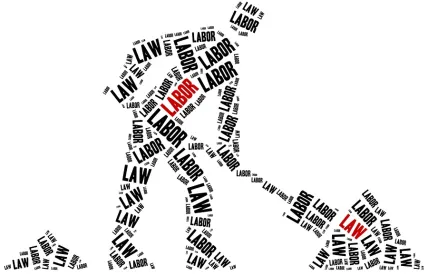This is a weekly post spotlighting labor topics in focus by the US legislative and executive branches during the previous week. In this issue, we cover:
-
March Employment Report
-
Fiscal Year (FY) 2022 Discretionary Request Released
-
Gig-Worker Rule | Legal Challenges
-
Public Input Solicited | Prevailing Wages for Immigrants & Non-immigrants
-
Labor-Management Reporting Program Revitalized
-
COBRA Premium Subsidy Guidance
-
Disabled Workers
March Employment Report
Last Friday, the U.S. Department of Labor reported more than 916,000 Americans returned to work in March, surpassing expectations and marking the biggest jump in employment since the summer, as Americans get vaccinated and more states and cities allow businesses to reopen. The overall unemployment rate fell to six percent, indicating the U.S. economy is on track for record growth this year.
Fiscal Year (FY) 2022 Discretionary Request Released
U.S. President Joe Biden released an outline of his $1.5 trillion budget request to Congress today (April 9) that would provide $769 billion for non-defense programs and $753 billion in national defense funding for FY 2022. The White House detailed discretionary spending levels that President Biden requests for each federal agency, along with information on the President’s investment priorities for programs dedicated to issues like clean energy, public health, education and helping disadvantaged communities. The Office of Budget and Management (OMB) is expected to unveil a more complete budget later this spring, including proposals for mandatory spending and tax reform.
Among other things, the discretionary request would provide $14.2 billion for the Department of Labor, a $1.7 billion or 14 percent increase from the 2021 enacted level. In addition, the President proposes:
-
Investing $2.1 billion, an increase of $304 million or 17 percent over the 2021 enacted level, in the Labor Department’s worker protection agencies;
-
Providing $285 million, a $100 million increase above the 2021 enacted level, to expand Registered Apprenticeship opportunities;
-
Providing $3.7 billion, a $203 million or six percent increase over the 2021 enacted level, for Workforce Innovation and Opportunity Act State Grants to make employment services and training available to more dislocated workers, low-income adults, and disadvantaged youth impacted by COVID-19;
-
Providing a $100 million investment for the Labor Department’s role in the new multi-agency POWER+ Initiative, aimed at re-skilling and re-employing displaced workers in Appalachian communities; and
-
Providing $2 billion to put welders, electricians, and other skilled labor to work building clean energy projects across the Nation.
Gig-Worker Rule | Legal Challenges
A case filed in late March by the Coalition for Workforce Innovation claims the Biden Administration violated the Administrative Procedure Act with its decision to delay implementing a Trump Administration rule on independent contractors. The Coalition is also seeking to have a Judge invalidate the Labor Department’s March 11 proposal to rescind the rule. The lawsuit could stall the Department of Labor’s plans to eventually determine many of these independently contracted workers are actually employees entitled to wage protections.
Public Input Solicited | Prevailing Wages for Immigrants & Non-immigrants
On April 2, the Labor Department published a Request for Information (RFI) soliciting public input on the sources and methods for determining prevailing wage levels for the employment of certain immigrants and non-immigrant workers. The RFI follows the Department proposing an 18-month delay in the effective date of a final rule changing the computation of prevailing wage levels for these workers. Published in January 2021, the final rule affects employers seeking to employ foreign workers on a permanent or temporary basis through certain immigrant visas or through H-1B, H-1B1 and E-3 non-immigrant visas. Interested parties must submit comments by June 1, 2021.
Labor-Management Reporting Program Revitalized
On April 6, the Labor Department’s Office of Labor-Management Standards relaunched the Persuader Reporting Orientation Program (PROP), a compliance assistance initiative to inform employers and their representatives about potential reporting obligations under the Labor-Management Reporting and Disclosure Act. The PROP initiative was previously in effect from 2011 to 2016.
COBRA Premium Subsidy Guidance
On April 7, the Labor Department issued guidance implementing the American Rescue Plan’s (“ARP”) Continuation of Health Coverage premium assistance provisions to provide full COBRA premium assistance. The ARP provides a 100 percent premium subsidy – between April 1 and September 30, 2021, for individuals whose reduction in hours or involuntary termination of employment makes them eligible for COBRA continuation coverage during this period.
On April 6, House Democrats shared that they had sent a letter asking Health and Human Services Secretary Xavier Becerra to establish a Special Enrollment Period (SEP) that will allow unemployed workers to maintain access to affordable coverage after the expiration of the American Rescue Plan Act (ARPA) COBRA subsidies. They note that absent a SEP, eligible workers who experienced job loss or reduced hours have access to premium-free COBRA coverage through September 30, 2021, under ARPA, may not be able to receive coverage through the Affordable Care Act Marketplace plans until January 1, 2022.
Disabled Workers
On April 5, House Education & Labor Committee Chairman Bobby Scott (D-Virginia) and House Energy & Commerce Committee Ranking Member Cathy McMorris Rodgers (R-Washington) introduced the Transformation to Competitive Integrated Employment Act (H.R. 2373), a bill to provide states and employers with resources to transition workers with disabilities to fully integrated and competitive jobs, that also phases out the subminimum wage for these individuals. A section-by-section summary is available here; a fact sheet here.
From April 12-26, the Labor Department will open a national online dialogue to gather ideas for ensuring equity in employment policies and programs for people with disabilities from historically underserved communities. This group includes communities of color, religious minorities, LGBTQ+ persons, rural communities and those otherwise affected by persistent poverty or inequality. Those interested in participating can register at RacialEquity.ideascale.com.




 />i
/>i
